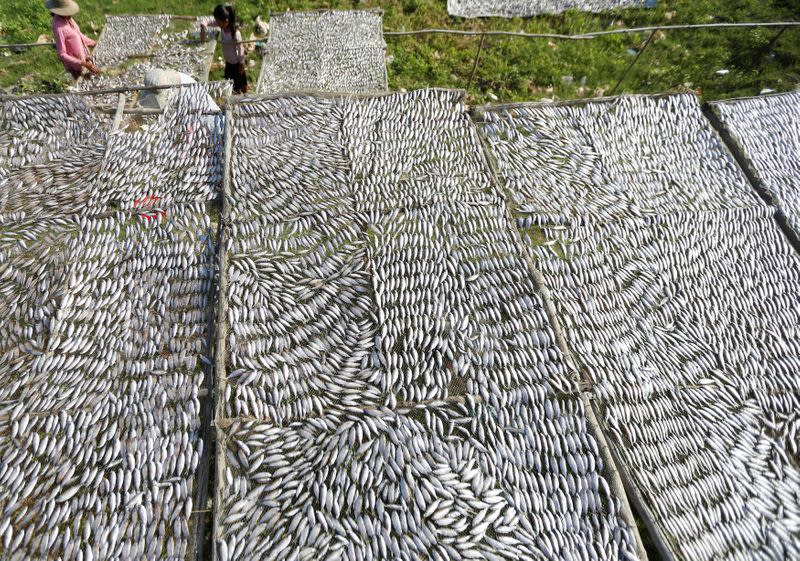By Prak Chan Thul and Lach Chantha
PHNOM PENH (Reuters) – Cambodian fisherman Tin Yusos is stealing a meal from the previous day’s catch with his wife and granddaughter aboard a boat moored at the shore of the Tonle Sap River.
They plan to catch another day in the vicinity of the Tonle Sap and Mekong rivers, although his expectations are low.
“There are no big fish left,” said Tin Yusos, 57. In the past, he could fetch a load of about 30 kilograms (fish) per day. Now he often catches just over one kilogram, worth about 15,000 riel ($ 3.69).
Experts blame hydropower projects, sand mining, deforestation, wetland conversion and climate change due to the dramatic drop in water levels in the region’s rivers, disrupting fishing and threatening millions of food supplies.
The Mekong usually swells during the rainy season where it merges with the Tonle Sap River, causing an unusual reverse flow in the Tonle Sap Lake, providing it with perfect and abundant fish supplies.
But in recent years, flow to the largest lake in Southeast Asia has sometimes been delayed, blaming the drought and hydropower dams upstream on the Mekong.
Whether China’s eleven dams are hurting the downstream countries that depend on the 4,350 km (2,700 miles) river is a geopolitical issue, and the United States has asked Lower Mekong countries such as Thailand, Vietnam and Cambodia to demand answers. .
Marc Goichot, an expert on the region’s waterways at the World Wide Fund for Nature (WWF), said dams and sand mining in particular could contribute to a loss of fish.
“The whole system is actually under stress and changing,” he said. “We need to address the root causes of the changes and relocate the key processes, such as the movement of fish.”
Ly Safi, 32, another Cambodian fisherman, said this year’s catch was the worst and that he felt trapped in an existence with little future.
“Some fishermen can save money and have left to do business on land, but for us we can not.”
($ 1 = 4,064,0000 Cambodian riel)
(Written by Ed Davies; Edited by Raissa Kasolowsky)
